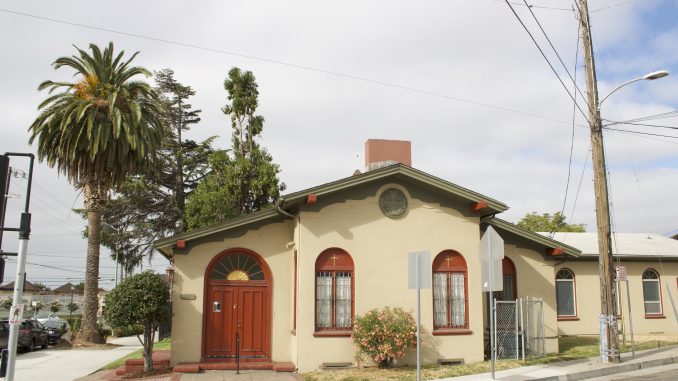
If you live or have lived in East Oakland, chances are that you have at some point driven up or down High Street to get to your destination, whether it’s to 580, 880, to the Fruitvale district or beyond. For most people, the landscape is typical East Oakland: you’ll find residential areas, a school, and warehouses lined from the Walgreens all the way down to the bridge leading to Alameda.
Historically, Fruitvale and East Oakland, stretching into San Leandro, were home to orchards. As Oakland grew, people needed to root themselves by finding a place to live and work. Not only did they need businesses and housing around them, but they also needed places of worship–which brings me to a particular corner on High Street and Courtland Avenue, across from Fremont High’s field.
This corner of East Oakland holds a special place in my memory. It is there that for a century, High Street Presbyterian Church sits. It is also where I, as a 12 year-old, attended and grew enamored not only with its congregation, but with the architecture. While the outside of the church has an unassuming and quiet facade, the inside is incredibly charming. More importantly, this church has gone largely undetected to folks in Oakland. It is an architectural sweetheart and a historic building for the reason that it was created by Oakland’s very own Julia Morgan.

This church has been almost forgotten in the notable works of the famed architect, the first woman to be licensed as an architect in California, but definitely merits a shoutout for existing. It is a small but mighty building that, while not as big or detailed like St. John’s Presbyterian Church in Berkeley, offers a treat for the people of East Oakland. We, too, have our own Julia Morgan landmark.
The architect Morgan was born on January 20, 1872 in San Francisco and was raised in Oakland; she graduated from Oakland High in 1890. Her childhood home was on 14th Street. Unfortunately, the house no longer stands. Morgan came of age in the early 20th century during a time when women had limited access to education, much less their own rights in this country.

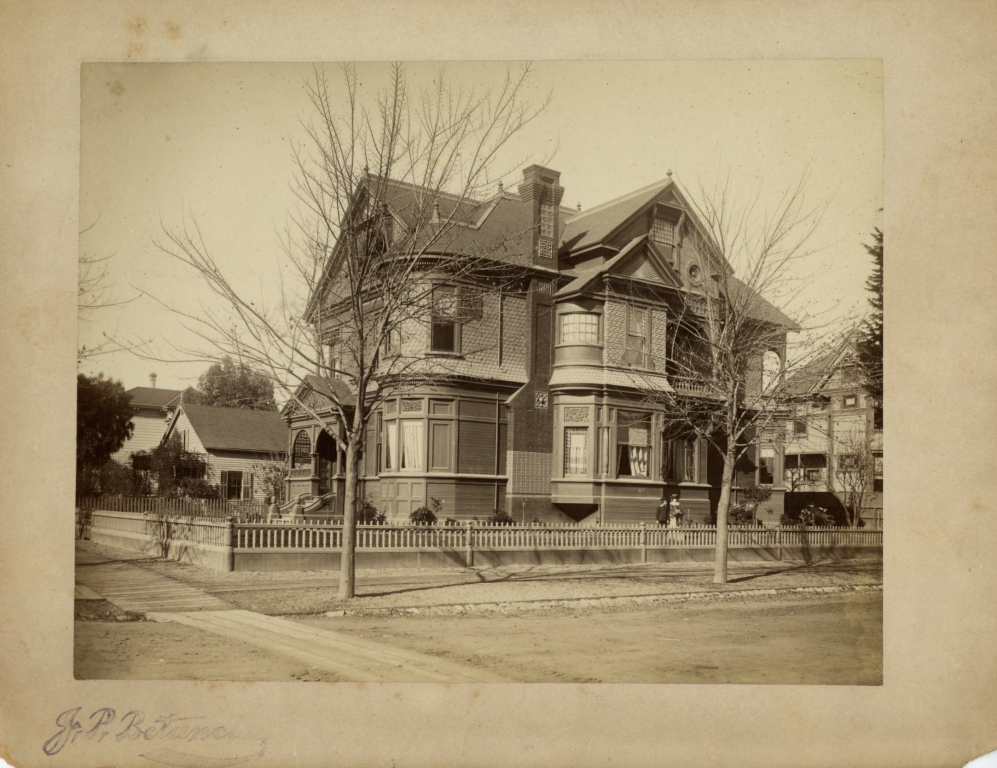
Morgan’s mother’s cousin, Pierre Le Brun, nurtured Ms. Morgan’s interest in architecture. Morgan forged a path so unique and on her terms by becoming the first woman in the following: “one of the first female engineering majors at the University of California, Berkeley, the first woman to pass the entrance exam in architecture for the École Nationale Supérieure des Beaux-Arts (and the school’s first female graduate), and the first licensed woman architect in California,” according to the Beverly Willis Architecture Foundation.
Locally in the Bay Area in 1904, she started her own firm where she established herself as a residential architect with commissions in Oakland. You can still drive by a few of these homes in Berkeley, Claremont, and Piedmont. However, as an engineer, she also established herself due to her knowledge of reinforced concrete. The most notable of these examples is also in East Oakland, Mills College’s El Campanil, completed in 1903 and then a women’s school.
Morgan was a force to be reckoned due to her extensive knowledge of design and engineering during a time again in which women were not expected to know. She surely proved this once more (and of course many times throughout her life) because the Fairmont Hotel had burned down a few days before its grand opening. Morgan was tapped to undertake the vision of a new Fairmont Hotel.
Many people were surprised to learn that a woman had done this, so much so that a reporter for The San Francisco Call, Jane Armstrong, visited the new building and asked the project’s foreman if it was indeed true. “Yes, the foreman answered, it was in the charge of “a real architect, and her name happens to be Julia Morgan, but it might as well be John Morgan.’ ” Morgan designed over seven hundred buildings in her lifetime, primarily in California, and is best known for Hearst Castle, publisher William Randolph Hearst’s estate in San Simeon, California.
In Oakland, besides homes and El Campanil at Mills, she also designed Chapel of the Chimes, The Ming Quong Home for Chinese girls, an orphanage near Mills College (now the Julia Morgan School for Girls), and other buildings and structures.
I had the opportunity to not only to see High Street Presbyterian Church but I also got to experience it for myself. The church was built in 1921, more than a century ago now.

I remember the first morning I went with my family, I was again twelve, and the thought of going to church in the morning on a Sunday was pure torture. Yet, off we went and parked our car around the neighborhood. I can recall I kept yawning and somehow mustered the energy to roll my eyes at my parents who kept griping at me to behave. I laugh at that memory now because as we crossed the street, it dawned on me that this building on the corner was the church we were going to attend.
I noticed as I dragged my feet across the crosswalk that it had two colonial Spanish red entrances, each of them with red brick stairs right next to each other in an L-shape at the corner. The archway of these entrances was solid wood but towards the top had a small glass window that was adorned by a sun-like golden fan. The immediate windows around this particular entrance were also arched with golden crosses at the top, painted in the same colonial Spanish red. In my head, I thought about how peculiar this small church looked. It was not big like the one next to it as it was only one floor.
As my mom, dad, and two siblings approached the entrance, we patiently stopped to let folks in their Sunday best trickle in before us. Folks of this church were mostly elderly parishioners and the congregation, although visibly small, was made up of Black, Latino, white, and Asian members. While we waited to enter, I looked back out at the street and began to calculate how this new church was not far at all from where I lived. My family and I lived right by the Oakland Zoo after moving from our house on Harmon Avenue and so it was quite easy to jump on 580 to get off at the High Street exit. I immediately got excited, as any teenager does, that once church was over, we would make it back home with enough time to enjoy our Sunday afternoon.
Eventually, I was distracted from my reverie when I noticed that two elderly women behind me wanted to pass. I stood to one side to let them go and soon overheard them as they animatedly chatted. They talked about the new pastor, Reverend Linda Gruel, and how she was a breath of fresh air, for she would bring in the youthful energy needed to keep the church going. At that moment, I smiled at the mention of our family friend. She was the reason we were here on an early Sunday morning. It was her first day and she was going to be officially introduced to the congregation.
I followed my family as we stepped into the dimly lit foyer. There was a slight echo from the red marbled floor but noticeable as the two elderly women that we had let pass greeted an elderly gentleman standing next to the other closed off entrance. His name was Walter and I would soon learn that he was close to being 100 and more importantly, that he and his family had been part of the original congregation when the church opened in 1921! He stood in front of a green velvet plush armchair greeting folks while next to him stood a small table with the morning program right by the entrance of the sanctuary.
It is important to note that true to Julia Morgan’s style, in between the sanctuary and hall were sliding doors with grid-like windows like the ones facing into the foyer. It was also these same kind of doors that stood at the back of the sanctuary that revealed a conference room used for bible study and church meetings, which opened into the foyer. This particular room was homey as it had a fireplace, a big wooden round table, and its accompanying wooden chairs. These sliding doors opened into the sanctuary for the design and use of more space in order for folks to congregate.
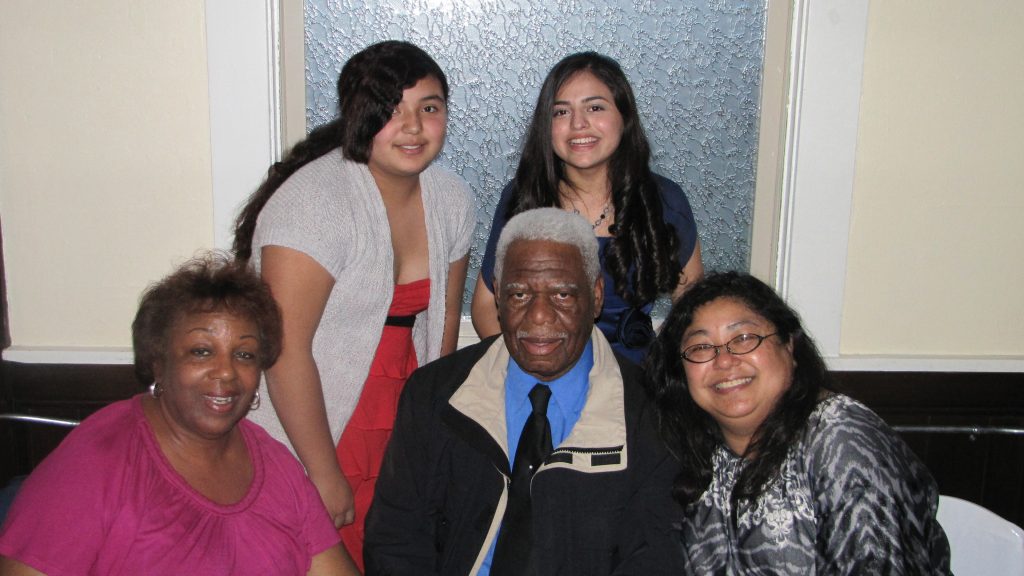
I had the privilege of one day sliding all these doors open for my quinceañera. I had both my service and dinner there. My quinceañera when I turned 15 in January of 2010 was not big nor loud; nor was there any dancing. I had Chinese food from Wing’s Daily Kitchen on Foothill Blvd and a huge raspberry mousse cake from Schubert’s Bakery in San Francisco. It was honestly a quiet event and in the words of my mother, “un servicio y celebración de gracias.” A service and thanks giving of my shedding of childhood. I now look back fondly at this birthday because I consider myself blessed to have celebrated turning fifteen among family and friends in this landmark of a building, likely bringing a little joy to the congregation on this day. The congregation was small, pretty diverse, and consisted of many elderly members, all who buzzed happily in anticipation of my birthday as I was one of the youngest members in a really long time.
Years later, I recall it as a lovely evening and one of many opportunities that I got to be in the small church that has sat quietly on a corner for a century. I spent my tween and teen years attending this small, beautiful, and quaint church.
The memories of bright Sunday morning services in the sanctuary, lively lunches in the hall with folks moving across the round tables to chat before the week started, and warm hugs from elderly congregation members who doted on me as if I was another one of their granddaughters is one I will forever hold close to my heart. Sadly, the congregation grew smaller and smaller as many of its members passed away.
It is thanks to this church, its congregation, and the two elderly women who had entered in front of us on our first day who really were instrumental in my acknowledgement and research of Julia Morgan. Their names? Janet and JK. These two amazing ladies really loved the church and its congregation, and were proud of Morgan as well.
I still hear them asking, “Do you know who created this church?” The answer? None other than Julia Morgan.
High Street Presbyterian Church, apart from its architectural significance, holds a special place in my heart for these reasons.
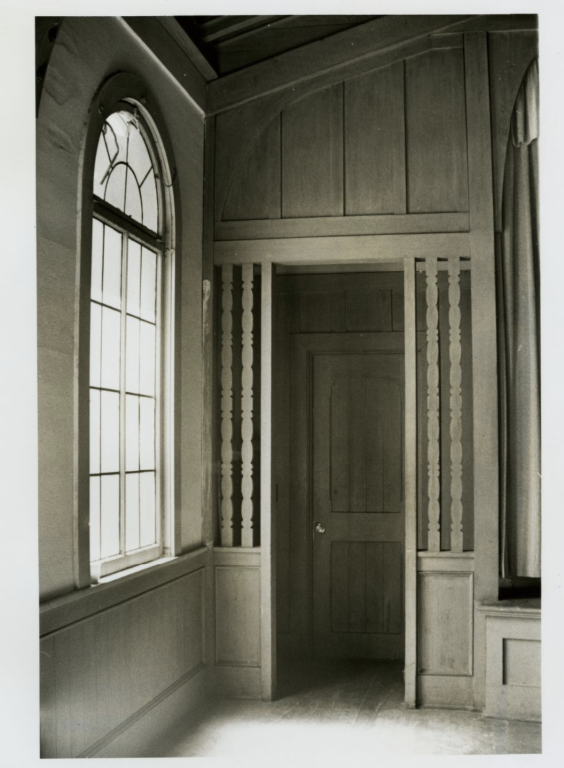
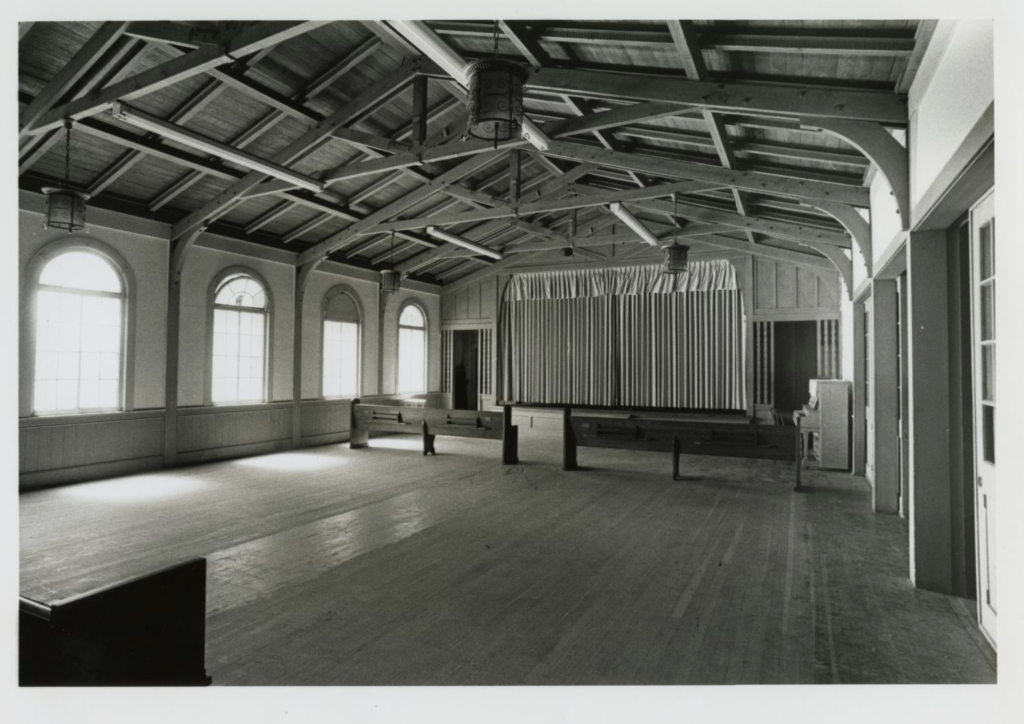
While the congregation I used to be a part of no longer used the building–many of our congregants were elders who have passed on, sadly, and others have moved away–I recently learned that it’s currently being used by a mostly Spanish-speaking congregation. English language classes take place in the structure on the weekends, and it is also used as a place for food distribution.
As a published poet and someone who works at creative writing organization serving youth in Old Oakland, I would one day love to use the building for a poetry reading. It would be a lovely way to honor those who are no longer here, who once graced these halls during church hours, and to honor Morgan herself.
For me, this church further reminds me of how East Oakland sits too on a corner waiting to be appreciated. I say this because I grew up in East Oakland and have heard all the negative comments under the sun, but to that, I say it is so much more. From orchards to thriving neighborhoods and gritty realities, we have made our own legacy by recognizing what we already have. Slowly but surely, à la Julia Morgan mode, we persevere to create a resilient community.
+ + +
Correction: The original version of the article misstated the cross street of the church.
Marabet Morales Sikahall is a Guatemalan American writer from Oakland, California. She is an alumna from both Creative Writing programs at San Francisco State University and Berkeley City College, including the Literary Arts program at Oakland School for the Arts. Some of her writing has been featured in The Acentos Review, Acción Latina's Tribute Chapook for Salvadoran writer, Roque Dalton, Harvard College’s Palabritas, and Oakland Voices. Additionally, her radio story in collaboration with local radio station, KALW and Oakland Voices aired on July 2019 for #MinorityMentalHealthAwarenessMonth. She is also the editor and founder of the literary journal, "Diaspora Baby Blues." She can be found on social media @marabet510.


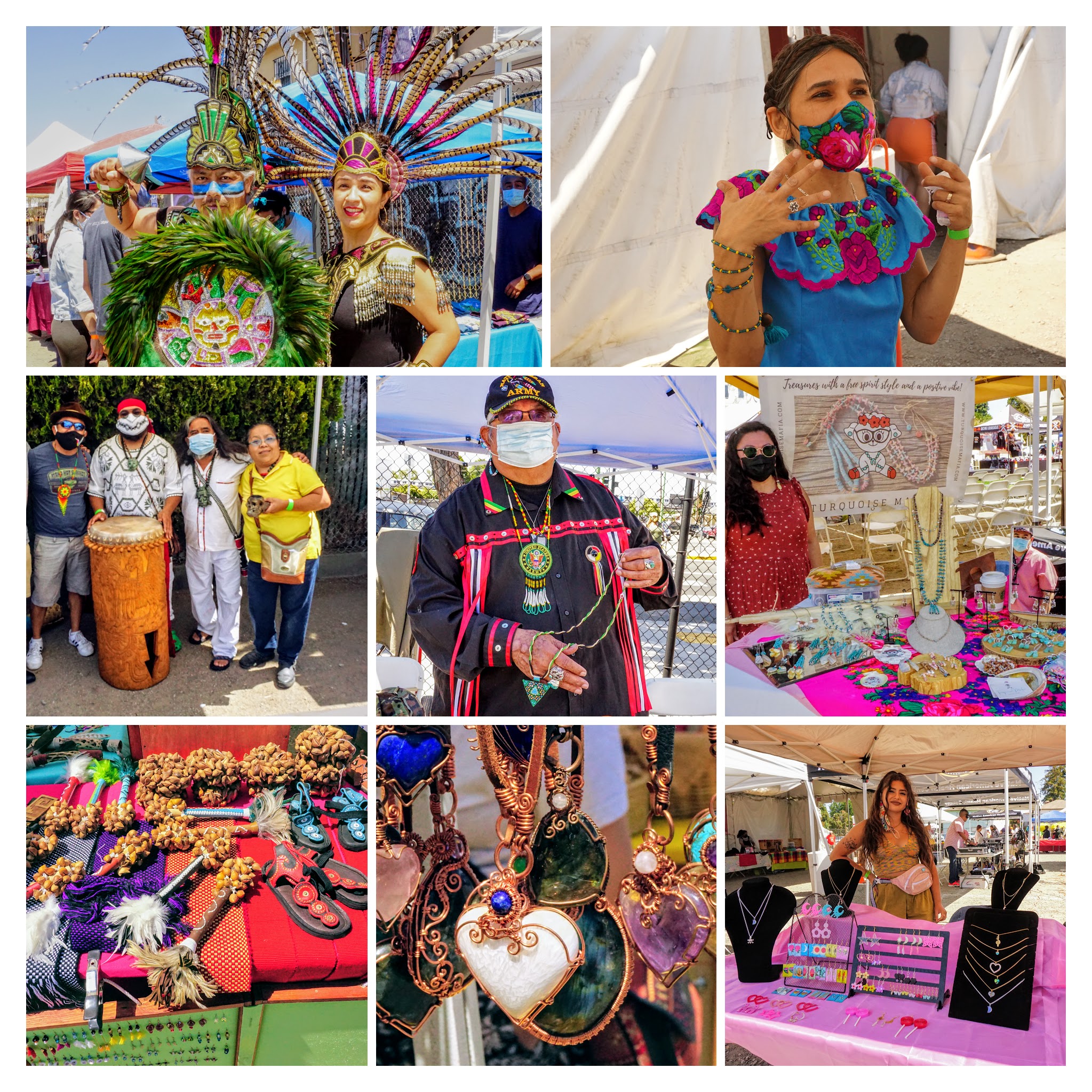
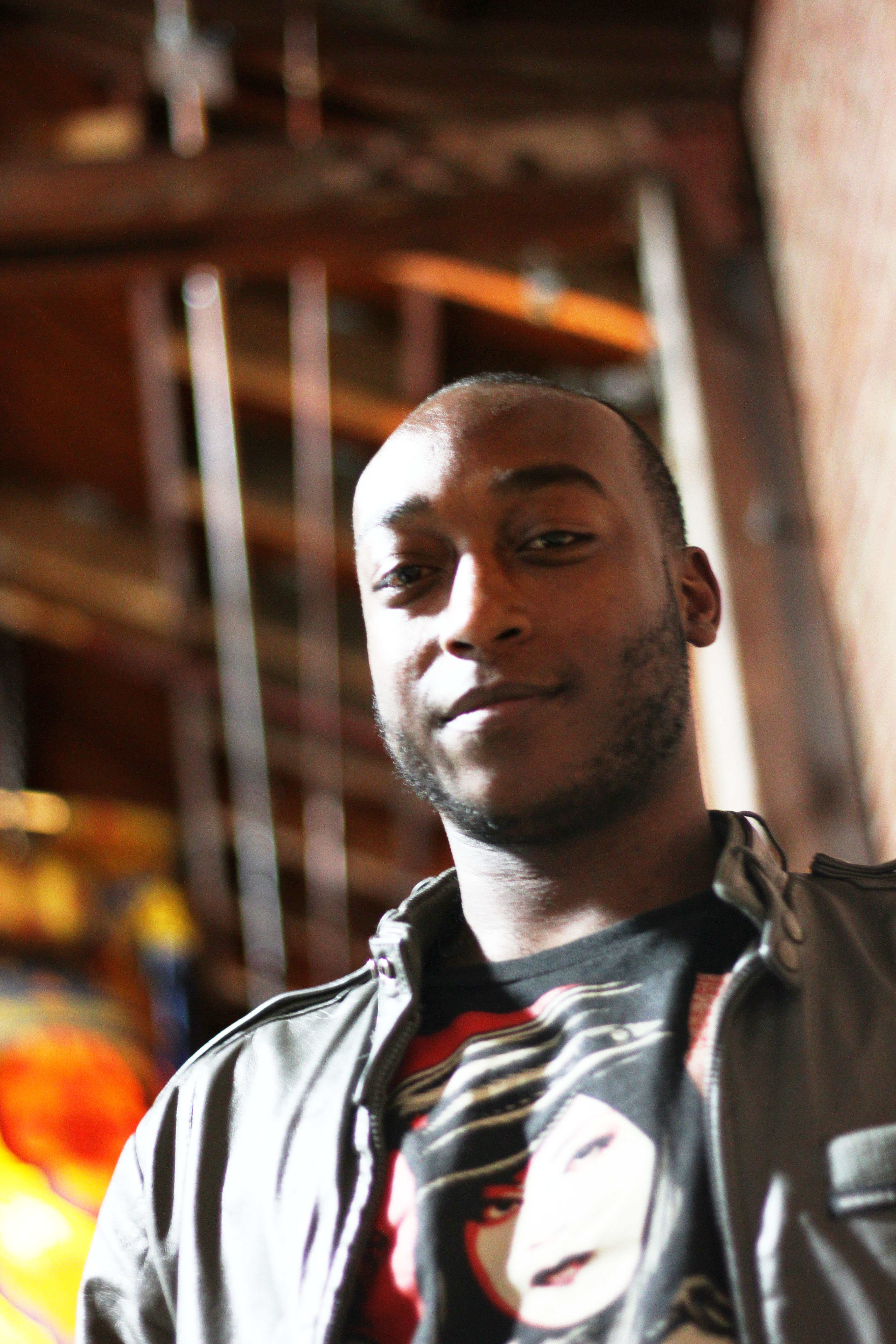
Wow. I love stories about Julia Morgan. She is the noted architect at my church at 5763 Walnut Street, (corner of Mason and Walnut) New Hope Church of God in Christ. It is truly a jewel in the neighborhood. I wish there was a way to see copies of the original design. Local folk say the church’s entrance orientation was changed from Mason Street to Walnut. Also, there are other structures that may have not been part of the original parcel. Thank you. I may visit High Street Presbyterian to see how the inside looks I side
Te felicito por este interesante artículo. Muy bien documentado e ilustrado. Sin duda eres un orgullo hispano americano.
I used to work at the fire station on 50th Ave. I remember this building, but had no idea that it was designed by Julia Morgan. Just wanted to add that I agree with you about the people who live in that area. Yes, there is crime and homelessness, but the majority of residents are good hard working people. I was proud to work in that district.
Gem of a story on so many levels! Touching personal relationship with the congregation and building; its growth from orchards in a vale of fruit; a building brought to life – how many times have I passed with giving a 2nd thought – worthy of being more a Julia Morgan footnote; and still faithfully reaching out with ESL classes and food distribution. Small yet mighty!.
Beautiful! A paean to community, neighborhood, and to Julia Morgan, our brilliant home-town gal.
How lucky you were to know about her from the get-go. As a kid in Oakland, I lived among some of her beautiful, beautiful buildings, admiring them, but their creator was unknown to me. That their creator was a woman would have blown my socks off!
Excellent article about a most unsung landmark! One slight correction, though: The intersection is High Street and Courtland Avenue (the latter of which segues into 42nd a block away [at Foothill Boulevard]).
What a wonderful story and I have the pleasure of working with Marabet at Chapter 510. Furthermore, I attended Fremont High School in the ’60s and have walked and driven by the church thousands of times but never entered. I grew up in and am still a proud resident of East Oakland.